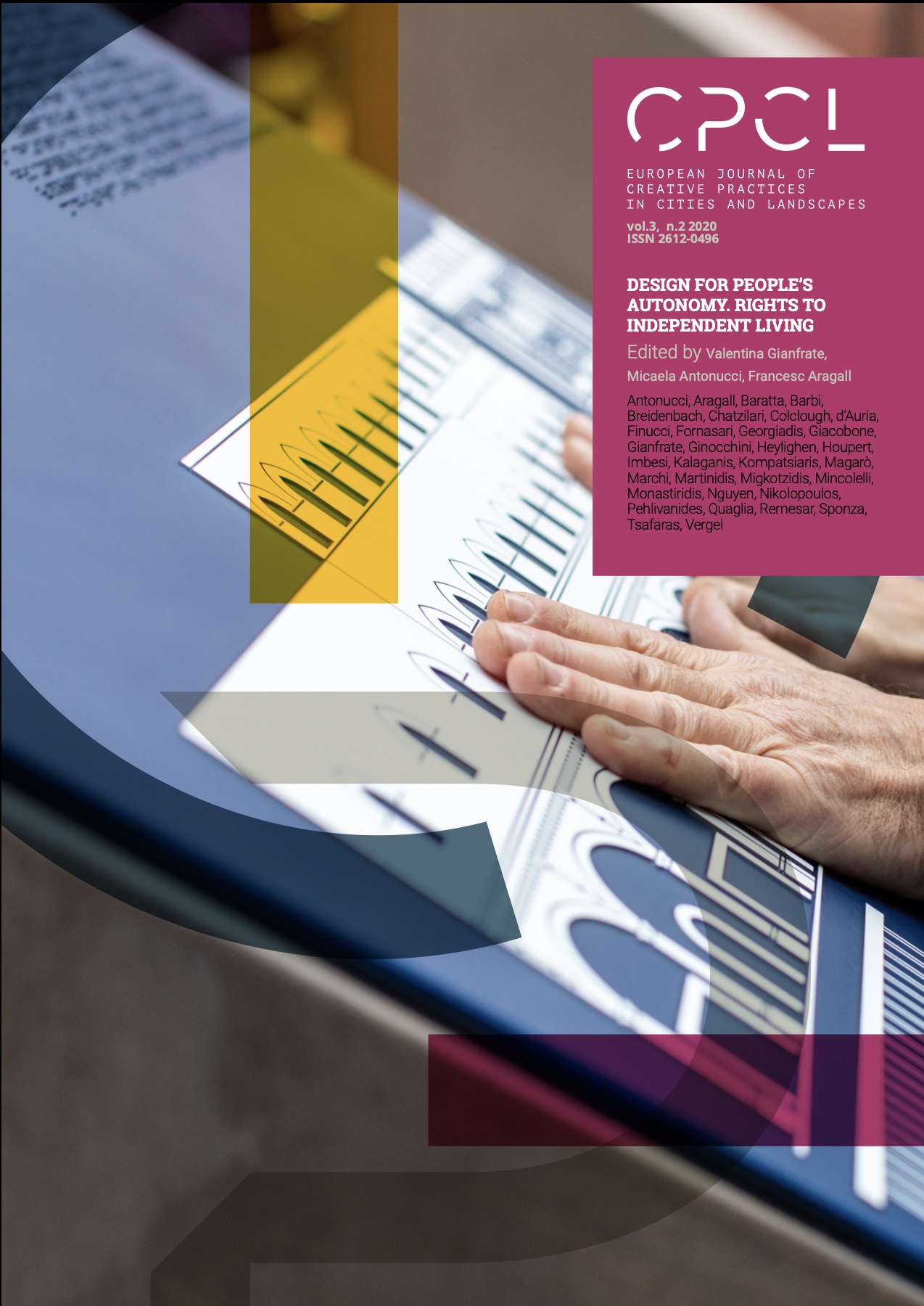Social inclusion and museum. Communities, places, narratives
DOI:
https://doi.org/10.6092/issn.2612-0496/12588Keywords:
Accessibility, Inclusion, Museum, Map, TactileAbstract
This article shows a research on museum and public space design with cultural value.
The article is divided into two parts.
The first part shows the principles followed in the design activity of the author.
Among the first is the principle of universal inclusion.
The second part of the article shows a series of case studies. In particular, we show some museum and cultural accessibility projects.
The text aims to demonstrate that cultural work cannot forget inclusion for all audiences.
Any design work must understand that the accessibility theme is not a variant.
The goal of inclusion is not an alternative.
Disability characterizes the condition of the person in an unfavorable context.
Designing favorable contexts is our mission.
A context is favorable when it allows autonomy of the persons.
An autonomy that allows you to measure your skills in order to increase them.
All this in a relational dimension.
Tactile maps, accessible books, museum displays: all opportunities for people's autonomy.
Downloads
Published
How to Cite
Issue
Section
License
Copyright (c) 2020 Fabio Fornasari

This work is licensed under a Creative Commons Attribution 4.0 International License.




